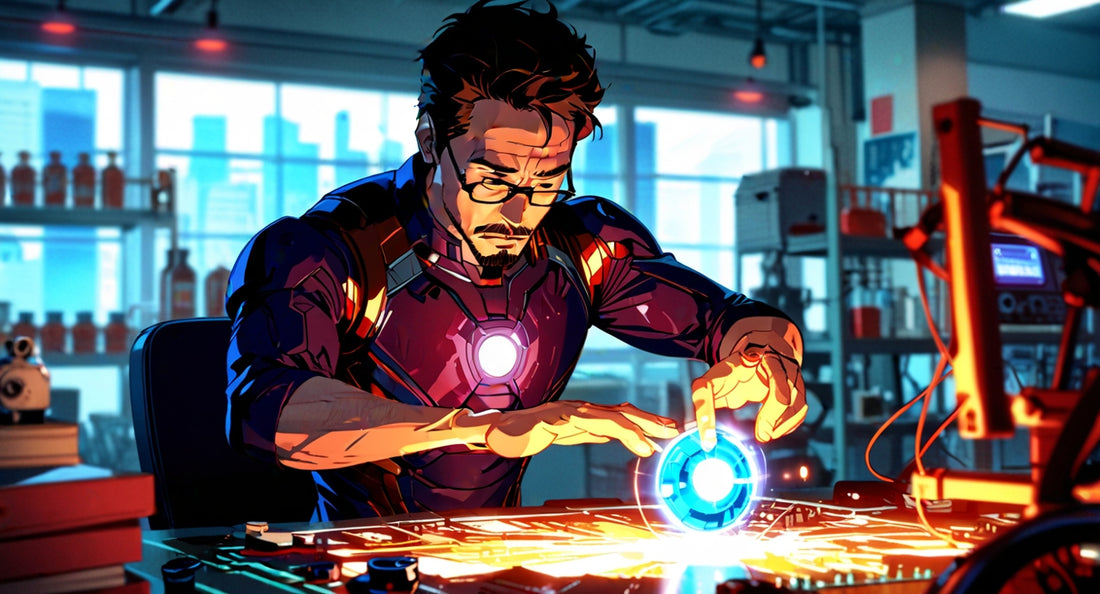
Tony Stark's Arc Reactor: Technology in the Marvel Universe
The Arc Reactor is a fictional technology invented by Tony Stark in the Marvel universe, based on miniaturized nuclear fusion. It serves as a compact, powerful energy source to power his Iron Man armor and keep Stark alive by preventing metal shrapnel from reaching its core. Inspired by real fusion concepts, it embodies clean, limitless energy, although its miniaturization is pure science fiction.
What is the Iron Man arc reactor?
The arc reactor was first introduced in 2008 in Iron Man, a film directed by Jon Favreau. The device is based on miniaturized nuclear fusion technology. The principle is based on the fusion of light atomic nuclei, generating massive energy similar to that produced in the cores of stars.
In the MCU, Stark succeeds in miniaturizing this technology, creating a portable energy source capable of powering his armors. This point is crucial, because although nuclear fusion is an active area of research in reality (via projects like ITER), the challenge of miniaturizing this technology on such a compact scale remains science fiction.
- • Nuclear fusion and scientific reality: In the real world, projects like ITER seek to recreate the energy of the stars through nuclear fusion, but they are still in the experimental stages. Miniaturization to create a portable power source like Tony Stark's is still out of reach. However, it reflects a hope for clean, sustainable energy in the future.
“The arc reactor is clean technology, renewable energy that could save the world.“ - Tony Stark in Iron Man 2
Why did Tony Stark lose his heart ?
The story of the réacteur arc creation is linked to Tony Stark's personal transformation. When captured by terrorists in Afghanistan, Stark suffered a severe chest wound, caused by shrapnel-like metal fragments threatening to penetrate his heart. An engineer, Ho Yinsen, implants a rudimentary electromagnet powered by a car battery to keep him alive.

Tony, with his brilliant scientific mind, uses the limited resources at his disposal to design the first version of the arc reactor. This primordial version enables him to replace the electromagnet and keep metal shrapnel away from his heart, while powering the Mark I armor he's building to escape his captors.
This moment is a turning point in Stark's life, marking his realization of the consequences of his role as an arms dealer and the beginning of a quest to use his talents to protect, rather than destroy.
What is the arc reactor's power source ?
Initially, the arc reactor is powered by a rare and precious metal: palladium. This metal, although effective in generating energy, proves toxic to Tony Stark, as demonstrated by Iron Man 2. Palladium slowly poisons Stark, prompting him to seek a safer alternative.
It's here that Tony draws on the scientific legacy of his father, Howard Stark, and discovers a new element, inspired by unfinished research. In his laboratory, he synthesizes this new (fictional) element, which solves toxicity problems and provides pure, renewable and stable energy. This element is often seen by fans as a nod to uranium or rare elements studied in nuclear physics.
- • Reference to real materials : Palladium does exist in our world and is used in industrial and scientific applications, notably as a catalyst in complex chemical reactions. However, the synthesis of a new element like Tony Stark's remains pure fiction, but inspires research into innovative materials for renewable energies.








